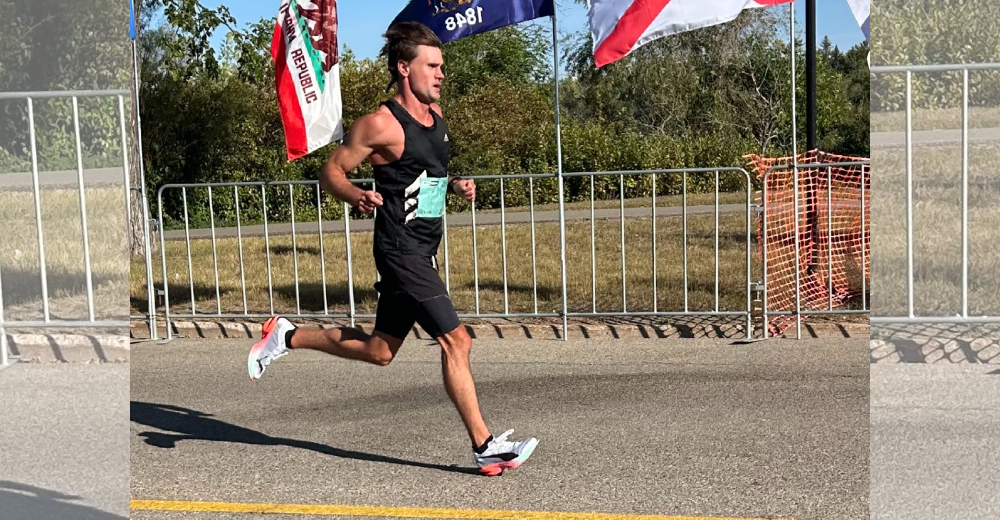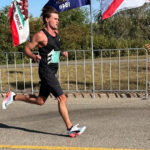Tanner Schatz has spent his whole life chasing big goals. So when, in his early 30s, he’d finished medical school, completed his residency and launched his career as a family practice anesthesiologist in Humboldt, he began to wonder: What next?
That’s when Schatz, always a voracious reader, read about someone running the Boston Marathon. Though he hadn’t run since high school, he fixated on the idea of qualifying for the storied race and built himself a training plan for his first marathon.
Months later, Schatz ran the 2017 Saskatchewan Marathon, finishing in two hours, 59 minutes and 28 seconds — good enough to qualify for the 2018 Boston Marathon. He went on to run Boston in a personal-best time of 2:48:46 despite historically bad conditions.
“The goal – as most goals do – evolved and changed,” Schatz says. “Then I was like: I would love to try to qualify for the other (World Marathon) Majors as a semi-elite.”
Since then, Schatz has completed eight marathons, including two of the World Marathon Majors — Boston and Chicago — leaving New York, London, Berlin, Tokyo and Sydney still on his list.
One of the most pivotal points in his running journey came two years ago, when Schatz suffered an Achilles injury. In hindsight, he calls it “a blessing in disguise.” The setback led him to physiotherapist and coach Bruce Craven at Craven SPORT Services. After rehabbing his injury, Schatz joined Craven’s OnTrack program, gaining access to structured coaching for the first time in his adult running career.
In the months since, Schatz has seen remarkable progress, setting personal bests at every distance from 5K to marathon this year while working full-time and making time for his wife and two young daughters. Most recently, he ran the TCS Toronto Waterfront Marathon in 2:42:47 — fast enough to qualify for the semi-elite field at next fall’s Berlin Marathon.
Reflecting on his last two years of training and racing, here are the changes Schatz has made to have the fastest season of his life:
Focusing on speed and quality over volume: Schatz was doing structured interval workouts before working with Craven, but the number of interval workouts he does a week has increased in the last two years. At the same time, Schatz’s weekly mileage has decreased, which allows his body to perform on interval days. He’s also trained for and raced shorter distances. “To run a marathon fast, you need to be able to run fast,” he says.
Incorporating weights and prehab: Strength training and mobility work can be tough to fit in, but Schatz now considers them essential. He credits that consistency with keeping him injury-free even as his training intensity has increased.
Fuelling more in workouts: Schatz always fuelled during races and long runs, but now also takes in calories during shorter workouts, which allows him to get more out of the workouts and gives him more opportunities to train his gut. He’s also become more diligent of eating carbohydrates and protein immediately after workouts, even when he’s rushing to work.
Connecting with other runners: Through the OnTrack group, Schatz runs regularly with others and has built a virtual network of training friends. “It’s one of the things that’s kept me going with it – that meeting of fellow people who are quite passionate about running and fitting it into their life and still making time,” he says.
Having a coach who believes in you: “Bruce’s faith in what he thinks I can do has helped me believe that I can do it,” Schatz says. And Craven backs up that faith with data, showing Schatz what his training predicts he’s capable of. “My half marathon time this fall shows I can run a 2:35 marathon and I say: ‘That seems crazy,’ but he’ll say: ‘You can.’ And he has a lot of belief in it.”









